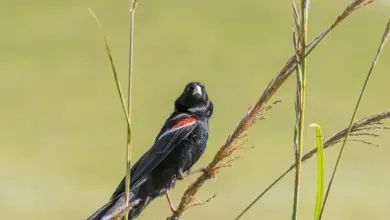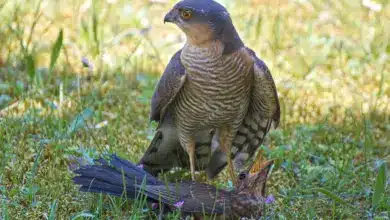Red-and-yellow Barbets (Trachyphonus erythrocephalus
The Red-and-yellow Barbets (Trachyphonus erythrocephalus) is a species of African barbet found in eastern Africa.
The males of the species have distinctive black (spotted white), red and yellow plumage, while youngsters and females are similar, but a little more dull.
The species lives in broken terrain and both nests and roosts in burrows.
Description
Red-and-yellow Barbets adult males have distinctive plumage made up of black with spotted white, red and yellow. It has a black forehead and crown with a slight crest. The nape is orange and red with black spots. The side of the neck is red, going into yellow. The back is mostly black with white spots. The tail is a blackish brown with up to eight cream spots forming bars. The underside of the tail is yellow with black bars. The chin and throat are yellow, and there is a black patch at the centre of the throat. The throat is bordered by areas with more orange areas. The breast is orange to red-orange, becoming more yellow at the sides, with a dark band with white spots crossing through the middle. The lower breast and belly are yellow. The wings are black with brown wing feathers. All feathers on the wing have white spots, giving a spotted or banded appearance. The long bill is typically red. The skin around the eyes is dark grey or black, while the eyes themselves can be yellow-brown, dark brown, red-brown or a shade in between. The legs are blue-grey, and the feet are the same colour.
The female is similar to the male, but is, overall, much duller, with less red and orange, and more yellow and white. Specifically, females lack the throat patch and typically lack the crown. Young birds are also duller- they typically have less red and orange, as with the female. The spots on the back are less white, and all blacks are more brown. The eyes are typically grey.
Habitat
The species avoid both very open areas and areas of dense woodland, instead preferring broken terrain such as riverbeds and cliffs or termite mounds.
Where not hunted, they are very tame, but their feathers are used by certain tribes, such as the Maasai.
Distribution
The nominate subspecies, Trachyphonus erythrocephalus erythrocephalus, is found from central Kenya to northeast Tanzania.
Trachyphonus erythrocephalus versicolor is found in south-east Sudan, north-east Uganda, south-west Ethiopia and north Kenya.
Trachyphonus erythrocephalus shelleyi is found in Somalia and eastern Ethiopia.
Diet / Feeding
The Red-and-yellow Barbets feed on seeds, fruit and invertebrates. They will also visit plantations and feed on cultivated fruit and vegetables. Fruit is eaten whole and indigestible material such as seed pits is regurgitated later. They are believed to be important agents in seed dispersal.
They also eat a wide range of insects, including ants, cicadas, dragonflies, crickets, locusts, beetles, moths, and mantids, as well as scorpions and centipedes. On occasion, they may also feed on lizards, frogs and geckos.
It forages on or close to the ground.
Nesting / Breeding
They typically nest in tunnels/burrows. The hen usually lays between 2 to 4 eggs that are incubated for 13 – 15 days. Nesting duties are shared by both parents.
References
- Lester L. Short; Jennifer F. M. Horne (2001). Toucans, Barbets and Honeyguides. Oxford University Press. pp. 122-5. ISBN 9780198546665.
African Barbet Information … African Barbet Species Index … African Barbet Photo Gallery


